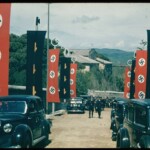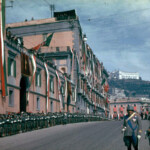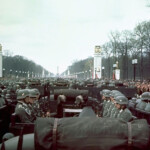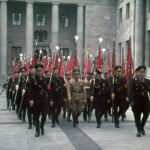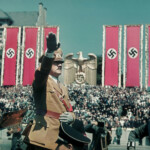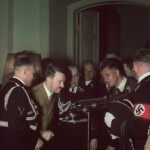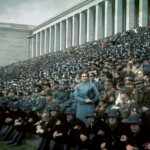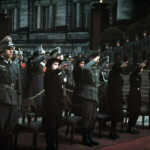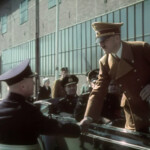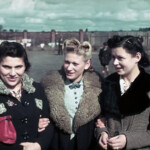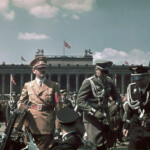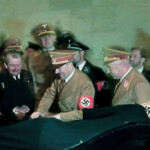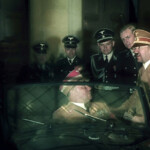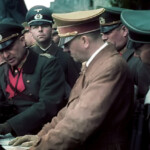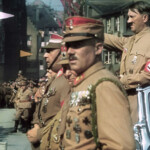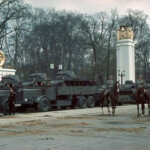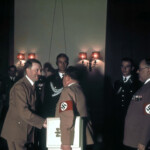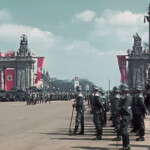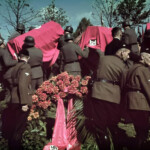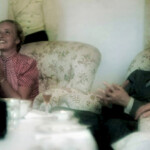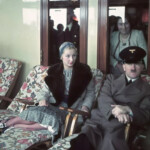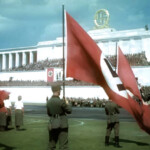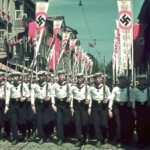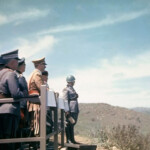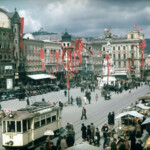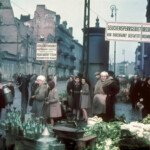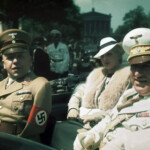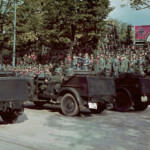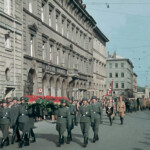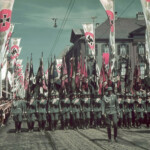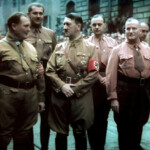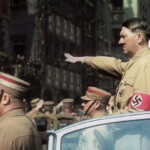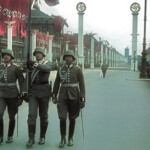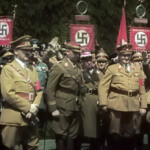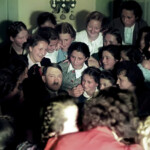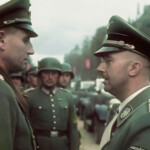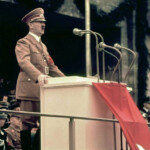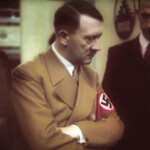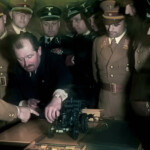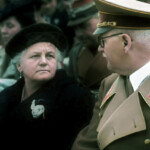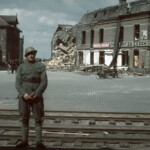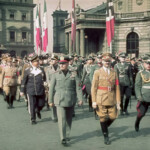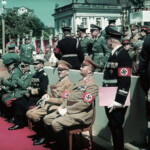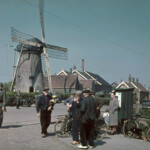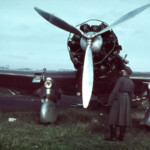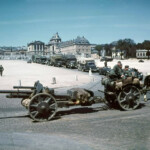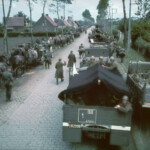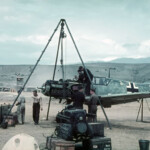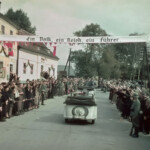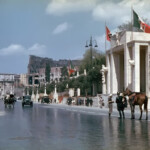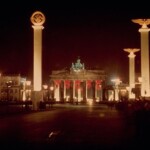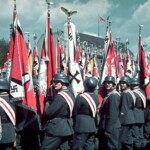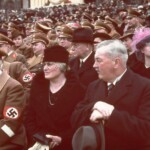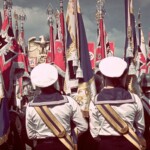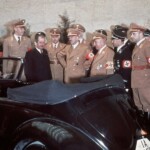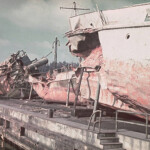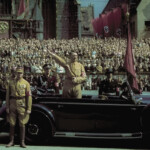 Hugo Jaeger was former personal photographer of Adolf Hitler. He traveled with Hitler in the years leading up to and throughout World War II. It took about 2,000 color photographs of the Austrian politician of German origin. Jaeger was one of the few photographers who used the techniques of color photography at the time.
Hugo Jaeger was former personal photographer of Adolf Hitler. He traveled with Hitler in the years leading up to and throughout World War II. It took about 2,000 color photographs of the Austrian politician of German origin. Jaeger was one of the few photographers who used the techniques of color photography at the time.
The story of the 2000 photographs from life.time.com (source):
We do not usually give so much space to the work of men we admire so little. So began a remarkable editor’s note to LIFE’s readers in an April 1970 issue of the magazine, introducing a photographer named Hugo Jaeger—a man who, LIFE pointed out, “was a fascist before the Nazi party was formed.”
In that issue, LIFE published a series of startling color pictures that Jaeger made in the late 1930s and 1940s, when he enjoyed unprecedented access to the Third Reich’s upper echelon, traveling with and chronicling Adolf Hitler and his Nazi cohorts at massive rallies, military parades and, frequently, in quieter, private moments. Jaeger’s photos were, it turned out, so attuned to the Führer’s vision of what a so-called Thousand Year Reich might look and feel like that Hitler reportedly declared, upon first seeing the kind of work Jaeger was doing: “The future belongs to color photography.”
The story of how LIFE came to own Jaeger’s collection of roughly 2,000 color photographs—an archive comprising a vast, insider’s portrait of the Reich—is an extraordinary and little-known tale of intrigue from the post-war years.
According to Jaeger’s own account of the creation, preservation and, ultimately, the sale of his photos, the espionage-thriller aspect of the tale began in 1945, when he found himself face to face with half a dozen American soldiers in a small town west of Munich, as Allied troops were making their final push across Germany at war’s end. This very scenario had, for years, been Jaeger’s enduring nightmare: he knew, after all, that he would be arrested—or worse—if the conquering Americans discovered his trove of pictures and his close, personal connection to Hitler.
On that spring day in 1945, during a search of the house where Jaeger was staying, the Americans found the leather satchel in which the Führer’s personal photographer had hidden literally thousands of color slides. What happened next, however, left Jaeger staggering.
Inside the satchel that held the compromising pictures, Jaeger had also placed a bottle of brandy and a small, ivory gambling toy—a spinning top for an old-fashioned game of chance known by, among other names, “put-and-take.” Happy with their find, the soldiers sat down to a session of put-and-take while sharing the bottle of brandy with Jaeger and the owner of the house where the photographer had been living. (Jaeger’s own apartment in Munich had been destroyed in Allied air raids.) The leather satchel, and whatever else was hidden away in it, was forgotten as the brandy dwindled and the game of put-and-take spun on.
After the Americans left, a shaken Jaeger packed the color slides into metal jars and, over time, buried them in various locations on the outskirts of town. In the years following the war, Jaeger occasionally returned to his caches, digging them up, drying them out, repacking and reburying them. He had hidden them systematically over an area of a square mile or so, with notes and a map to guide him back: “From the railroad switch, 263 ties west, then 15 meters north…”
Jaeger finally retrieved the collection for good in the late 1950s—all 2,000 of the slides, amazingly, were still in good shape—and in 1965, after storing them in a Swiss bank for years, he sold the entire archive to Time Inc.
Here, in grudging acknowledgment of the scope of Jaeger’s achievements as a photographer—acknowledgment, in other words, of the work of a man we admire so little—LIFE.com presents a series of color pictures from the over-the-top celebrations in Berlin marking Hitler’s 50th birthday (April 20, 1939), as well as some of the ludicrously gaudy gifts bestowed on the German leader by his Nazi peers and sycophants.
Seen today, Jaeger’s photographs elicit an unsettling sense of both dismay and dread: dismay at the sheer scale of the tribal, nationalist madness that, not so long ago, convulsed a “civilized” nation of millions; and dread at the horrors that, we know, such madness would soon unleash.

